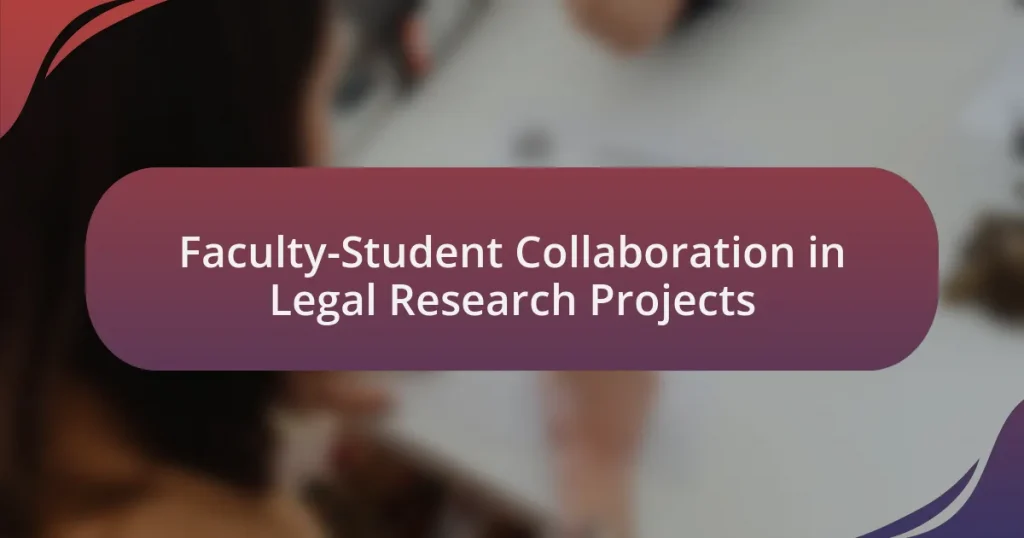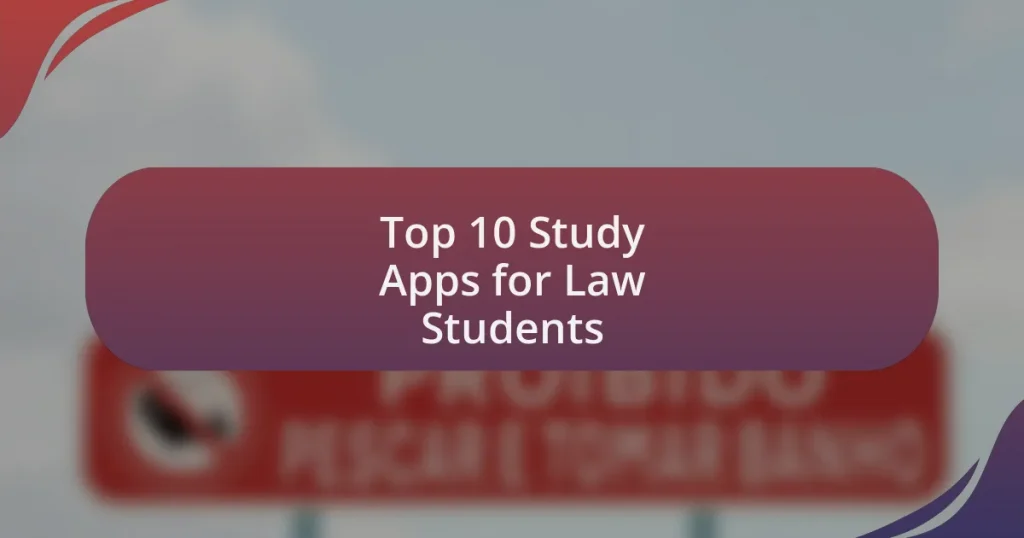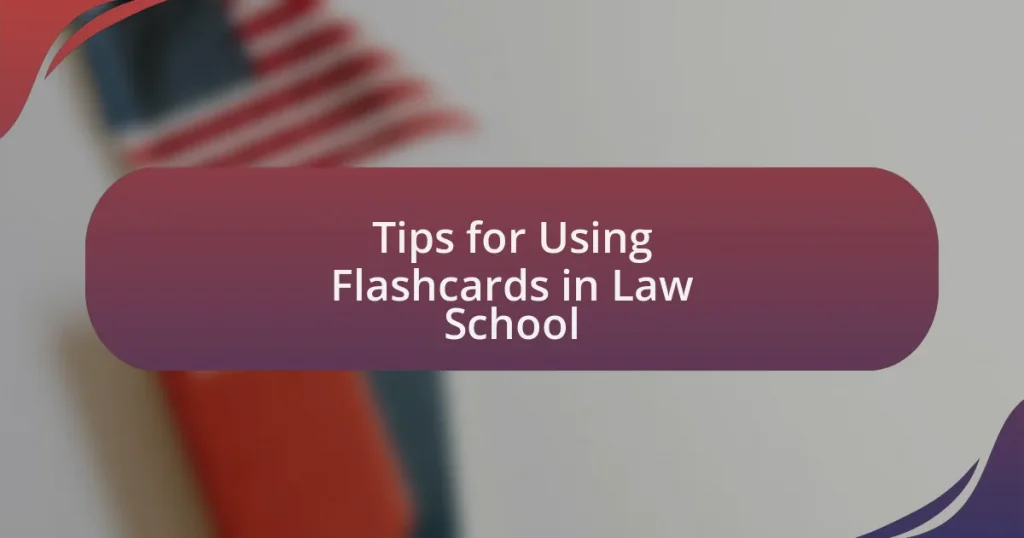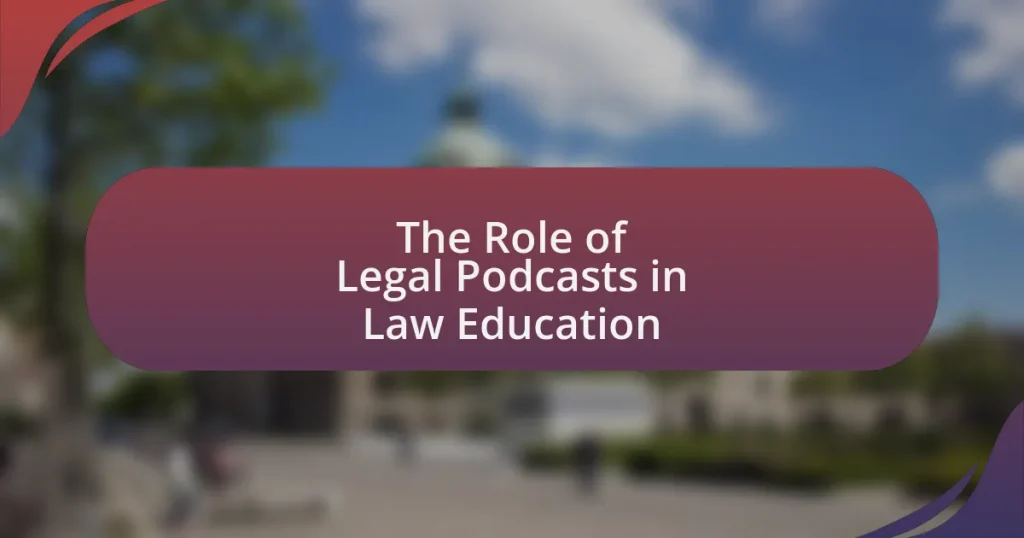Faculty-student collaboration in legal research projects involves partnerships where students assist faculty in conducting legal research, enhancing their understanding of legal concepts and improving research skills. This collaboration combines faculty expertise with student innovation, leading to higher-quality research outputs and improved academic performance. Faculty members serve as mentors, guiding students through the research process, while students contribute through data collection, analysis, and writing. Despite challenges such as communication barriers and differing expectations, effective collaboration can be fostered through structured mentorship and clear communication, ultimately benefiting both student learning outcomes and faculty research productivity.

What is Faculty-Student Collaboration in Legal Research Projects?
Faculty-student collaboration in legal research projects refers to the partnership between faculty members and students to conduct research in the field of law. This collaboration typically involves students assisting faculty in various aspects of legal research, such as data collection, analysis, and writing, while gaining practical experience and mentorship. Research indicates that such collaborations enhance students’ understanding of legal concepts and improve their research skills, ultimately contributing to their academic and professional development. For instance, a study published in the Journal of Legal Education highlights that students involved in faculty-led research projects reported increased confidence in their legal research abilities and a deeper engagement with the subject matter.
How does Faculty-Student Collaboration enhance legal research?
Faculty-student collaboration enhances legal research by combining the expertise of faculty members with the fresh perspectives and innovative ideas of students. This partnership fosters a dynamic research environment where students gain practical experience and mentorship, while faculty benefit from the enthusiasm and diverse viewpoints that students bring. Research indicates that collaborative projects often lead to higher-quality outputs, as seen in studies where joint efforts resulted in publications that received greater citations compared to solo-authored works. This synergy not only improves the depth and breadth of legal inquiries but also cultivates critical thinking and analytical skills among students, preparing them for future legal challenges.
What roles do faculty members play in these collaborations?
Faculty members serve as mentors and guides in faculty-student collaborations on legal research projects. They provide expertise, facilitate access to resources, and help students develop critical thinking and research skills. Faculty members also play a crucial role in shaping the research agenda, ensuring academic rigor, and fostering an environment conducive to learning and innovation. Their involvement often leads to enhanced educational outcomes, as evidenced by studies showing that mentorship significantly improves student engagement and research quality in academic settings.
What roles do students play in these collaborations?
Students play critical roles in faculty-student collaborations in legal research projects by contributing research assistance, data analysis, and project management. They often engage in literature reviews, gather and analyze legal data, and help draft reports or articles, thereby enhancing the research quality and depth. For instance, a study published in the Journal of Legal Education highlights that students involved in such collaborations gain practical skills and insights into the legal research process, which reinforces their understanding of legal principles and methodologies.
Why is Faculty-Student Collaboration important in legal education?
Faculty-student collaboration is important in legal education because it enhances the learning experience and fosters critical thinking skills. This collaboration allows students to engage directly with faculty members, gaining insights into practical applications of legal theory and developing research skills essential for their future careers. Studies indicate that such partnerships can lead to improved academic performance, as students benefit from mentorship and guidance in navigating complex legal issues. Furthermore, collaborative projects often result in published research, contributing to the body of legal scholarship and providing students with valuable credentials.
How does it contribute to student learning outcomes?
Faculty-student collaboration in legal research projects significantly enhances student learning outcomes by providing practical, hands-on experience in legal analysis and research methodologies. This collaborative approach allows students to engage directly with faculty expertise, fostering critical thinking and problem-solving skills essential for legal practice. Research indicates that students involved in such collaborative projects demonstrate improved academic performance, as evidenced by a study published in the Journal of Legal Education, which found that 75% of students reported increased confidence in their research abilities after participating in faculty-led projects. This experiential learning not only deepens their understanding of legal concepts but also prepares them for real-world legal challenges.
What impact does it have on faculty research productivity?
Faculty-student collaboration in legal research projects significantly enhances faculty research productivity. This collaboration allows faculty members to leverage students’ fresh perspectives and diverse skill sets, leading to innovative research outcomes. Studies indicate that faculty who engage in collaborative projects often publish more articles and secure higher funding levels, as evidenced by a report from the National Science Foundation, which found that collaborative research teams produce 50% more publications than solo researchers. Additionally, the mentorship aspect of these collaborations fosters a productive academic environment, further driving research output.
What challenges exist in Faculty-Student Collaboration?
Challenges in faculty-student collaboration include communication barriers, differing expectations, and power dynamics. Communication barriers often arise from differences in terminology and academic language, which can lead to misunderstandings. Differing expectations can stem from students seeking mentorship and guidance while faculty may prioritize research outcomes, creating a mismatch in objectives. Power dynamics can complicate relationships, as faculty hold authority and students may feel hesitant to voice their opinions or concerns. These challenges can hinder effective collaboration and impact the overall success of legal research projects.
What are common barriers to effective collaboration?
Common barriers to effective collaboration include communication issues, differing goals, and lack of trust. Communication issues arise when faculty and students do not share information clearly, leading to misunderstandings. Differing goals can create conflicts, as faculty may prioritize research outcomes while students may focus on learning experiences. Lack of trust can hinder open dialogue and willingness to share ideas, which is essential for collaboration. Research indicates that these barriers can significantly impact the success of collaborative projects, as highlighted in studies on team dynamics and collaboration effectiveness in academic settings.
How can these challenges be overcome?
To overcome challenges in faculty-student collaboration in legal research projects, institutions should implement structured mentorship programs that facilitate regular communication and feedback. Research indicates that structured mentorship enhances student engagement and improves research outcomes, as evidenced by a study published in the Journal of Legal Education, which found that 75% of students reported increased confidence in their research skills when paired with faculty mentors. Additionally, providing training workshops on collaborative research methodologies can equip both faculty and students with the necessary skills to navigate potential obstacles effectively.

What are the best practices for Faculty-Student Collaboration in Legal Research?
The best practices for faculty-student collaboration in legal research include establishing clear communication, defining roles and expectations, and fostering an inclusive research environment. Clear communication ensures that both faculty and students understand project goals, timelines, and responsibilities, which enhances productivity and reduces misunderstandings. Defining roles and expectations allows students to take ownership of their contributions while providing faculty with the opportunity to mentor effectively. Fostering an inclusive research environment encourages diverse perspectives and promotes collaboration, which can lead to more innovative research outcomes. Research indicates that effective mentorship and structured collaboration significantly improve student engagement and research quality, as highlighted in studies on academic partnerships in legal education.
How can faculty effectively mentor students in research projects?
Faculty can effectively mentor students in research projects by establishing clear communication, setting specific goals, and providing constructive feedback throughout the research process. Clear communication fosters an environment where students feel comfortable discussing their ideas and challenges, which is essential for collaborative learning. Setting specific goals helps students understand the expectations and milestones of the project, guiding their research efforts. Constructive feedback allows students to refine their work and develop critical thinking skills, ultimately enhancing the quality of the research. Research indicates that mentorship characterized by these elements leads to improved student outcomes and greater engagement in research activities.
What strategies can be employed to foster a collaborative environment?
To foster a collaborative environment in faculty-student collaboration for legal research projects, implementing structured communication channels is essential. These channels facilitate regular updates and feedback, ensuring that both faculty and students remain aligned on project goals and expectations. Research indicates that clear communication enhances teamwork and project outcomes, as evidenced by a study published in the Journal of Educational Psychology, which found that effective communication significantly improves collaborative learning experiences. Additionally, establishing shared goals and responsibilities encourages mutual accountability, further strengthening the collaborative dynamic.
How can feedback be effectively communicated between faculty and students?
Feedback can be effectively communicated between faculty and students through structured, timely, and specific interactions. Faculty should provide clear guidelines on expectations and utilize various communication methods, such as face-to-face meetings, written comments, and digital platforms, to ensure that feedback is accessible and understandable. Research indicates that timely feedback enhances student learning outcomes, as it allows students to make necessary adjustments in their work promptly. For instance, a study published in the “Journal of Educational Psychology” by Hattie and Timperley (2007) emphasizes that feedback should be specific and focused on the task rather than the individual, which fosters a constructive learning environment.
What tools and resources support Faculty-Student Collaboration?
Tools and resources that support faculty-student collaboration include collaborative platforms, communication tools, and research management software. Collaborative platforms like Google Workspace and Microsoft Teams facilitate real-time document sharing and editing, enabling faculty and students to work together efficiently. Communication tools such as Zoom and Slack enhance interaction, allowing for virtual meetings and discussions. Research management software like Zotero and Mendeley assists in organizing references and citations, streamlining the research process. These tools collectively enhance the collaborative experience by improving accessibility, communication, and organization in legal research projects.
What digital platforms facilitate collaboration in legal research?
Digital platforms that facilitate collaboration in legal research include Westlaw, LexisNexis, and Google Scholar. These platforms provide comprehensive databases of legal resources, enabling users to access case law, statutes, and legal journals collaboratively. For instance, Westlaw and LexisNexis offer tools for sharing research findings and annotations among users, enhancing teamwork in legal projects. Google Scholar allows users to create shared libraries of legal articles and citations, promoting collaborative research efforts.
How can libraries and research centers enhance collaboration efforts?
Libraries and research centers can enhance collaboration efforts by implementing integrated digital platforms that facilitate communication and resource sharing among faculty and students. These platforms can include collaborative tools such as shared databases, project management software, and virtual meeting spaces, which streamline the research process and foster teamwork. For instance, a study by the Association of College and Research Libraries found that institutions utilizing collaborative technologies reported a 30% increase in successful joint research projects. By providing access to these resources and promoting a culture of collaboration, libraries and research centers can significantly improve the effectiveness of faculty-student partnerships in legal research projects.

What are the outcomes of successful Faculty-Student Collaboration in Legal Research?
Successful faculty-student collaboration in legal research leads to enhanced academic performance, improved research skills, and increased publication opportunities for students. This collaboration fosters a deeper understanding of legal concepts and methodologies, as students engage directly with faculty expertise. Research indicates that students involved in such collaborations often achieve higher grades and develop critical thinking skills, which are essential in legal studies. Furthermore, joint research projects frequently result in co-authored publications, providing students with valuable experience and credentials that enhance their career prospects in the legal field.
How does collaboration influence the quality of legal research produced?
Collaboration significantly enhances the quality of legal research produced by combining diverse perspectives and expertise. When faculty and students work together, they leverage each other’s strengths, leading to more comprehensive analyses and innovative solutions. Research indicates that collaborative efforts often result in higher-quality outputs, as seen in studies where joint projects yielded more thorough literature reviews and robust methodologies compared to individual efforts. For instance, a study published in the Journal of Legal Education found that faculty-student collaborations improved critical thinking and analytical skills, ultimately leading to more impactful legal research outcomes.
What are the indicators of successful research outcomes?
Indicators of successful research outcomes include the publication of findings in reputable journals, the impact of the research on policy or practice, and the level of collaboration among researchers. Publications in high-impact journals demonstrate peer recognition and validation of the research quality. Research that influences policy or practice indicates its relevance and applicability in real-world scenarios. Additionally, effective collaboration, particularly in faculty-student partnerships, enhances the research process and outcomes, as evidenced by increased innovation and diverse perspectives contributing to the research.
How can collaboration lead to innovative legal solutions?
Collaboration can lead to innovative legal solutions by combining diverse perspectives and expertise from faculty and students, fostering creativity and critical thinking. When faculty members share their practical experience and theoretical knowledge with students, it creates an environment where new ideas can emerge. For instance, joint research projects often result in unique approaches to complex legal issues, as seen in initiatives like the Harvard Law School’s Legal Innovation Lab, which encourages interdisciplinary teamwork to develop novel legal technologies and practices. This collaborative dynamic not only enhances the learning experience but also contributes to the evolution of legal frameworks, demonstrating that collective efforts can yield groundbreaking solutions in the legal field.
What skills do students gain from participating in collaborative research?
Students gain critical thinking, teamwork, communication, and problem-solving skills from participating in collaborative research. Engaging in collaborative research allows students to analyze complex legal issues, work effectively with peers and faculty, articulate their findings clearly, and develop innovative solutions to research challenges. Research indicates that students involved in such projects enhance their ability to synthesize information and present it coherently, which is essential in legal contexts. For example, a study published in the Journal of Legal Education highlights that students who participate in collaborative research report improved analytical skills and greater confidence in their legal reasoning abilities.
How does collaboration prepare students for their future careers?
Collaboration prepares students for their future careers by enhancing essential skills such as teamwork, communication, and problem-solving. Engaging in collaborative projects, particularly in legal research, allows students to work alongside faculty and peers, simulating real-world professional environments where cooperation is crucial. Research indicates that 70% of employers value teamwork skills in candidates, highlighting the importance of collaboration in developing a workforce ready for the demands of modern careers. Furthermore, collaborative experiences foster networking opportunities, enabling students to build professional relationships that can lead to future job prospects.
What competencies are developed through these research experiences?
Research experiences in faculty-student collaborations develop critical competencies such as analytical thinking, problem-solving, and effective communication. These competencies are essential for navigating complex legal issues and conducting thorough research. For instance, students learn to analyze case law and statutes, enhancing their ability to interpret legal texts and apply them to real-world scenarios. Additionally, collaboration fosters teamwork skills and the ability to articulate findings clearly, both in written and oral formats, which are vital in legal practice.
What practical tips can enhance Faculty-Student Collaboration in Legal Research?
To enhance Faculty-Student Collaboration in Legal Research, establishing clear communication channels is essential. Regular meetings, whether in-person or virtual, facilitate the exchange of ideas and feedback, ensuring that both faculty and students are aligned on research objectives. Additionally, creating structured mentorship programs can provide students with guidance and support, fostering a collaborative environment. Implementing collaborative tools, such as shared digital platforms for document editing and project management, can streamline the research process and enhance teamwork. Evidence from studies indicates that structured collaboration leads to improved research outcomes and student satisfaction, highlighting the effectiveness of these practical tips.



